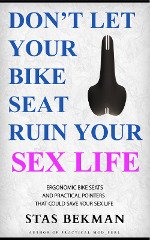2.1 - Types of Flexibility
Description
This article is from the Stretching FAQ, by Brad Appleton Brad_Appleton@ivhs.mot.com with numerous contributions by others.
2.1 - Types of Flexibility
Many people are unaware of the fact that there are different types of
flexibility. These different types of flexibility are grouped according to
the various types of activities involved in athletic training. The ones
which involve motion are called "dynamic" and the ones which do not are
called "static". The different types of flexibility (according to Kurz) are:
"dynamic flexibility"
Dynamic flexibility (also called "kinetic flexibility") is the ability
to perform dynamic (or kinetic) movements of the muscles to bring a
limb through its full range of motion in the joints.
"static-active flexibility"
Static-active flexibility (also called "active flexibility") is the
ability to assume and maintain extended positions using only the
tension of the agonists and synergists while the antagonists are being
stretched (See "1.4 - Cooperating Muscle Groups"). For example,
lifting the leg and keeping it high without any external support
(other than from your own leg muscles).
"static-passive flexibility"
Static-passive flexibility (also called "passive flexibility") is the
ability to assume extended positions and then maintain them using only
your weight, the support of your limbs, or some other apparatus (such
as a chair or a barre). Note that the ability to maintain the position
does not come solely from your muscles, as it does with static-active
flexibility. Being able to perform the splits is an example of
static-passive flexibility.
Research has shown that active flexibility is more closely related to the
level of sports achievement than is passive flexibility. Active
flexibility is harder to develop than passive flexibility (which is what
most people think of as "flexibility"); not only does active flexibility
require passive flexibility in order to assume an initial extended
position, it also requires muscle strength to be able to hold and maintain
that position.
Continue to:

